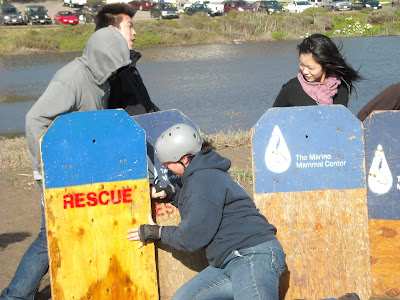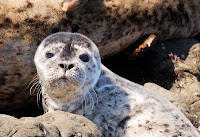The Eastern North Pacific Gray Whale, a.k.a. the California Gray Whale, needs our immediate attention and you can help by signing a very important petition before December 8, 2010, that simply gets the National Marine & Fisheries Service (NMFS) to institute a status review of the population. This review is urgently needed. Here's why...
Recent numbers of mother-calf pairs are the lowest in years, due to a myriad of threats including climate change, lack of food, sonar testing, boat strikes and many other hazards these fabulous creatures must negotiate during their long annual migration. The California Gray Whale Coalition has submitted an important petition to the NMFS on October 21, to upgrade the whales to "depleted status" under the Marine Mammal Protection Act. Your action right now to sign the petition requests that the National Marine Fisheries Service issue a positive 60 day finding on the petition in order to initiate a formal status review of the population.
A suggested draft, provided by the California Gray Whale Coalition follows. Comments supporting the depleted petition filed by the California Gray Whale Coalition need to be submitted by December 8, 2010.
To submit your comment electronically, go to the following URL and enter the suggested draft copy, provided below:
Suggested Draft Copy for Petition Comment:
I (enter your name here) submit a formal comment of support for the California Gray Whale Coalition depleted petition ( RIN 0648-XA018) and request that NMFS accept the petition and make a positive
60-day finding.
I (enter your name here) submit the Eastern North Pacific Gray Whale population is below its optimum sustainable population and that the petition provides compelling evidence of inhibited reproduction, diminished prey availability and increased predation, which are severely impacting the viability of the population.


















